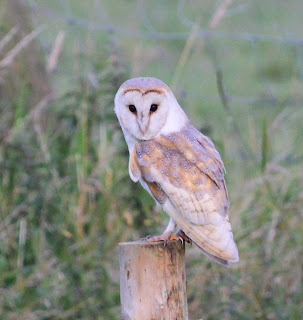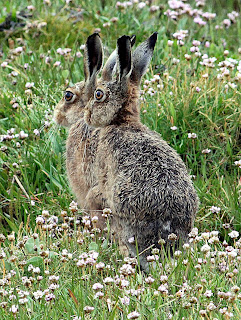Will and I finally got to Out Rawcliffe for a spot of mist netting on a fine morning with just an early breath of wind that left the nets motionless in the cover of the planation. As expected for early to mid-June we didn’t get a mega catch, just 19 birds, with 13 new and 6 recaptures. New birds: 5 Great Tit, 2 Whitethroat, 2 Blackbird and 1 each of Goldfinch, Blackcap, Sedge Warbler and Willow Warbler. Recaptures were 4 Sedge Warbler, and 1 each of Great Tit and Willow Warbler.
We hoped we might catch several fresh juvenile (3J) warblers today, but it was not to be. The only juveniles caught were 3 Great Tit and 2 Blackbird so we must wait a few more days for an indication of breeding success as more youngsters appear.




By 1015 hours the ever present 2011 wind sprung up to 15-20mph again which caused us to take the nets down.
Other birds seen this morning, most from the well positioned coffee chairs on the sun-deck of the moss: A Raven flying inland and then later (if the same one) back out towards Pilling Moss; 1 Great-spotted Woodpecker, 1 Jay, 1 Lesser Redpoll, 3 Corn Bunting, 2 Skylark, 2 Buzzard, 2 Oystercatcher, 20+ Lapwing, 6 Goldfinch, 1 Yellowhammer, 12 Tree Sparrow, 4 Swift, 6 House Martin, 4 Mistle Thrush, 2 Stock Dove, 30+ House Sparrow. And not forgetting 25+ Brown Hares which entertained us as they rushed and chased around the nearby fields in groups 8 and 10 at times.
Driving home through Town End, Out Rawcliffe I heard roadside Chiffchaff, Sedge Warbler and Whitethroat and then stopped to snap a Great-spotted Woodpecker doing a Woody Woodpecker impression on a telegraph pole.

Yes, it was just an average sort of morning but don’t we sometimes take even those too much for granted?












































.JPG)







.jpg)











